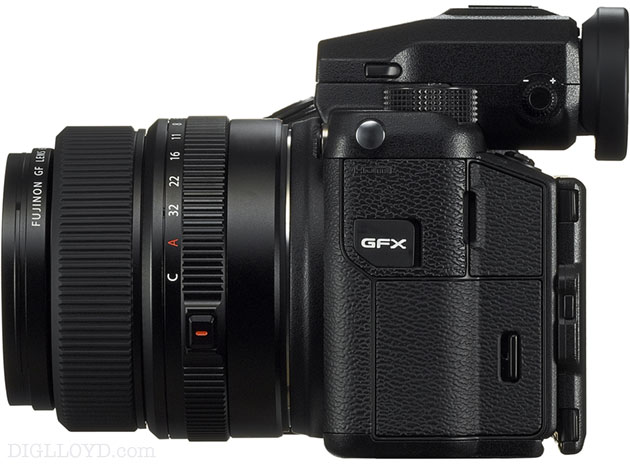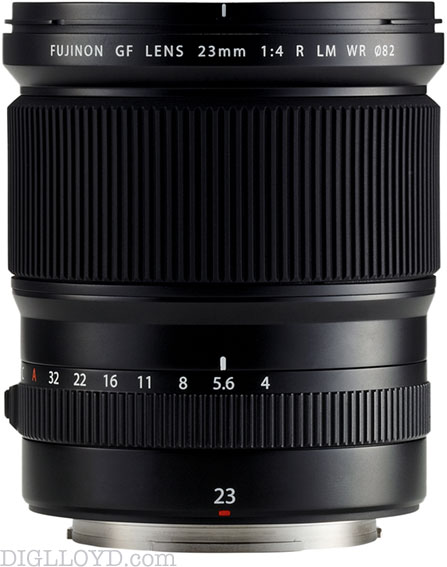Thoughts on the Fujifilm GFX 50S

Get Hasselblad X1D and Fujifilm GFX at B&H Photo. See my Fujifilm GFX wish list, to be fleshed out as the product line becomes available for ordering.
B&H does not yet list a price for the Fujifilm GFX. I’ll post an update when available—please order using my links at B&H when buying—NOT email notification from B&H—so I get credit.
Fujifilm has a microsite for the Fujifilm GFX.
I covered the Fujifilm GFX in detail in an earlier post today. More thoughts here.
First, I would not be a buyer of the Hasselblad X1D at this point in time. It could turn out to be the better performer (doubtful but possible), but unless you have to have one now, it makes a lot of sense to see what Fujifilm delivers. I will be reviewing both cameras in detail of course.
Second, I see the Fujifilm GFX 50S as the camera I’ve been waiting for. Years of CaNikon stagnation and failure to innovate in any real way have left me and many of my readers at best irritated with CaNikon. And many have said the heck with it and moved to Sony with all the negatives there (many positives too, but at present Sony still is a flawed system). Basically, if I’m going to shoot mirrorless, the Fujifilm GFX looks awesome, and coupling it with something like the Olympus E-M1 Mark II may well cover all the mainstream bases. It certainly would for me—the only sports I do are my daughters running cross country and even the E-M1 works great for that. Still, I’ll carve out a blanket exception for sports and wildlife, where 35mm DSLRs (and sometimes APS-C) still ‘rock’.

Unless something changes in the CaNikon DSLR market (resolution, EVF, dropping the bulky mirror, in body stabilization and pixel shift like Pentax—basically mirrorless with all the trimmings), no one looking for maximum image quality and able to afford things like Zeiss Otus or Leica SL would be in their right mind to choose a 35mm DSLR or a Leica SL or whatever—it makes no sense in this new context. The Fujifilm GFX is not just rocking the boat, the boat has flipped over. Which players will swim, and which will sink? Note that I’m not talking about the low and mid-range here, but the high end of the DSLR market, which has always been an area where buyers look “up” for options. Now there is something not that far up (far less expensive than something like a Leica S, and with the right optics and design features).
From what I can tell, Fujifilm has done just about everything right, including allowing aperture control from either the lens or the camera. The type of shutter support is as yet unknown as I write this (there is a focal plane shutter, but is there an EFC shutter?). A focal plane shutter allows for a wide range of possibilities that the Hasselblad X1D does not, since the X1D requires the leaf shutters in the lens (leaf shutter remains a compelling feature for some pros, but I deem that segment tiny). But an EFC shutter is important too, since a focal plane shutter can also cause vibration.
Lenses are key, and here Fujifilm has made a brilliant strategic move in offering a lens line (within a year) that spans the key 18mm to 100mm (35mm equiv) range. Anything outside that range is nice, but not a requirements for the vast majority of shooters. Compare that to the Leica SL system, which 9 months after introduction still has no shipping prime lens option—not one. Thus the major stumbling block to moving to a new system (for those who can afford it) is just not there (it held back Sony mirrorless for a few years, and still does for Pentax).
The Fujifilm GFX sensor is apparently an optimized/customized Fujifilm effort. On paper, the 51.4-megapixel is a winner just from having ~67% more area than a full-frame 35mm sensor, though that comes with a 4:3 aspect ratio (43.8 x 32.9mm). But I don’t see that as the big win per se. Rather, the increased sensor area coupled with a set of all-new lenses optimized for mirrorless, close attention to image quality in the areas of dynamic range and color and electronics are all equally if not more important. If Fujifilm executes well as I expect they will, the image quality ought to set a new bar for single frame images that should be breathtaking, perhaps rivalling or beating an optimal Pentax K1 SuperRes mode image. Except that the Fujifilm lenses are likely to trounce all the lenses offered by Pentax.
The statement by Fujifilm that a mirrored camera has vibration issues that degrades image sharpness by up to 15% is not to be taken lightly: one can compare megapixels, but if a decade of assessing cameras and lenses has taught me anything, it’s about time that having huge mirror (or lousy shutter) vibrating the sh*t out of image quality is an approach destined for the dumpster (so I have to believe Fujifilm did something to deal with the shutter, like an EFC shutter option). So we have to step back and look at the actual recorded files with real lenses, not some set of specifications. With the huge commitment shown by announcing 6 lenses within the first year, I expect that Fujifilm is going to deliver something really, really nice. Something I’m going to really want, and something I suspect Sony will be hard pressed to compete with, because there is no evidence that Sony is serious about high-end image quality (in particular the Sony A7R II compressed raw fiasco (now fixed) and the “cooking” of image files not to mention ergonomic and menu issues). I hope I’m dead wrong there, since a bruising competition between Fujifilm and Sony and Hasselblad can only drive down prices and raise quality over a few years.
Which makes me wonder even more: just how long are Canon and Nikon going to sit on their hands while Sony eats away at their core business and Fujifilm now draws off the higher end customer?

Glenn K writes:
While I share your excitement about this camera, I can't help but wonder if it will really produce images that are enough better than a FF Sony sensor behind Zeiss glass to justify a likely 2x price, particularly if Sony delivers a 50+ MP sensor with lossless compression. It will be interesting to see.
DIGLLOYD: I also wonder. There is a good chance that the Pentax K1 SuperRes pixel shift mode will outperform both the Hasselblad X1D and Fujifilm GFX (in the limited conditions in which SuperRes mode can be used). But outstanding lenses for the Pentax K1 are a serious handicap—there are none, barring conversion or certain discontinued Zeiss ones.
Compression: Sony has had lossless compression since October 2015. It doesn’t matter for much vs lossless, only in extreme conditions where Sony 11+7 lossy compression can’t handle the jump in value.
With Sony, the pixel quality is “cooked” — clearly pre-processed. As one example of evidence for this (aside from what my eyes tell me), Sony A7R II images cannot take anywhere near the sharpening of a D810 file without rapidly breaking down into an ugly mess. I think there is far more going on with image quality than compression or nominal bits per pixel or whatever.
With a little luck the Hasselblad X1D will show up in 10 days or so and I can see for myself in the field. Let’s just see what medium format mirrorless can deliver.































